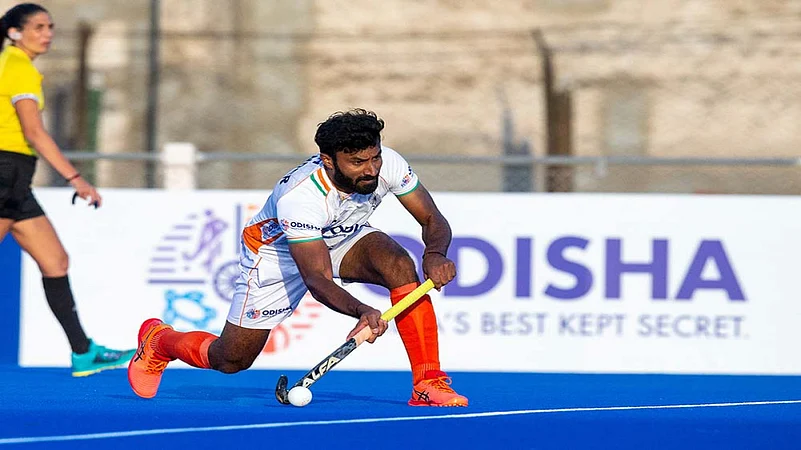Twenty-seven-year-old defender of the Indian national hockey team, Surender Kumar, made a recovery from COVID-19 in September last year to return to international competition when the Indian team toured Europe in February this year, its first in almost 12 months. A winner of two Asian Champions Trophy Gold medals and one Asia Cup Gold, the 2016 Rio Olympian is central to India’s plans for the Tokyo Olympics in July-August. Surender recently returned from Argentina, where India defeated the Olympic champions twice in the FIH Pro League. His victorious fight against Covid and return to top form is a story of courage and conviction. Excerpts from an interview with Soumitra Bose.
When you got Covid in August, how did it impact you?
Having developed Deep Vein Thrombosis (blood clots in veins) after testing positive for COVID-19, there were uncertainties about how much I could train and push myself a high intensity sport like ours. But I am very grateful to Hockey India and SAI for ensuring the best of treatment. With proper medication and regular consultation with the doctor, I made a full recovery.
ALSO READ: A Bubble Shot Through
Explain the periods during quarantine and recovery.
We were initially in isolation at the SAI Centre, Bangalore campus, before we were moved to the hospital as a precaution. COVID-19 symptoms were not severe, although I had lost taste and smell, but my recovery took longer due to DVT. I was on blood thinners for nearly six months but was able to start physical activity by the seventh week. This quarantine period was challenging mentally, because as sportspeople you are used to a very active life. It was extremely choking but my teammates and support staff played a big role in easing my mind. They ensured I was in good spirits and we often connected over video conference, utilising the time to analyse our previous games.
What were the challenges when you returned to the national camp? How did you settle down?
The return to full training was planned systematically. At first, we trained in isolation and didn’t join the rest of the group who were already in training. Our scientific advisor Robin Arkell monitored our fitness levels daily and we began with low intensity conditioning work. Gradually, the intensity was increased and even when we joined the rest after about three weeks, our heart rates were constantly monitored and we were rested a little more than the others during higher intensity training.
Getting back to my old fitness level was the main focus. As I said, our return to full training was in a phased manner and chief coach Graham Reid and Arkell constantly checked on our progress. I must say that due to this systematic approach I was able to score my best yo-yo test (multi-stage fitness test measuring an athlete’s aerobic capacity) results in January 2021, four months after testing positive. The score (above 23) was my highest ever.
How did the backroom staff help you?
They were my biggest support. From the chief coach to the workers at SAI, everyone was concerned. When you know so many people are working in the background to ensure you make a full recovery, you really want to give it your all. I am grateful to them.
How challenging was it to play a highly intense, full international match?
Once you make a full recovery, there is no challenge as such. I was looking forward to playing our first tour in Europe and it was really exciting to be back in competition mode after a year. The more we play high-intensity matches, the better we will know where we stand.
















